In today’s competitive market, establishing your financial services brand as an industry authority is essential to gaining a competitive edge. Thought leadership is a powerful tool that can position your brand as a trusted advisor and industry expert. By effectively leveraging thought leadership, you can build credibility, attract new clients, and differentiate yourself from competitors.
Understanding the Concept of Thought Leadership in Financial Services
Thought leadership is more than just sharing your opinions and ideas. It involves providing valuable insights and knowledge that resonate with your target audience. In the financial services industry, thought leadership means becoming a go-to resource for expert advice, trends, and best practices.
When it comes to thought leadership in the financial services industry, it’s not just about being knowledgeable. It’s about offering innovative perspectives and solutions to complex financial challenges. It requires deep industry expertise, a thorough understanding of market trends, and the ability to communicate effectively with clients and peers.
Thought leadership in financial services is crucial in today’s market. In a fast-paced and information-driven world, clients seek financial advisors who can provide more than just transactional services. They want thought leaders who can guide them through financial uncertainties and help them make informed decisions.
By establishing your brand as a thought leader, you can differentiate yourself from competitors and attract clients who value expertise and trust. Thought leadership allows you to position yourself as an authority in your field, someone who is not only knowledgeable but also willing to share valuable insights and advice.
As a thought leader in the financial services industry, you can shape the conversation and drive meaningful change. By sharing your expertise and thought-provoking ideas, you can contribute to the advancement of the industry.
Thought leadership also opens doors to new opportunities. It can lead to speaking engagements, media interviews, and collaborations with other industry experts. By being recognized as a thought leader, you can expand your network and build valuable relationships to further enhance your career.
However, becoming a thought leader is not an overnight process. It requires consistent effort and dedication. You must stay up-to-date with industry trends, conduct research, and continuously educate yourself. Thought leadership is a journey, and it requires ongoing commitment to personal and professional growth.
Steps to Establish Your Brand as an Industry Authority
Building thought leadership doesn’t happen overnight; it requires a strategic approach and consistent effort. Here are the key steps to establish your financial services brand as an industry authority:
Identifying Your Unique Value Proposition
Before you can position yourself as a thought leader, identify your unique value proposition. What expertise or insights do you bring to the table that sets you apart from others? Understanding your unique value will help you define your niche and target audience.
For example, if you are a financial advisor specializing in retirement planning, your unique value proposition might be your in-depth knowledge of tax-efficient investment strategies for retirees. By understanding the specific needs and challenges retirees face, you can position yourself as an expert in this area and attract clients seeking specialized advice.
Further, identifying your unique value proposition allows you to differentiate yourself from competitors. You can create a compelling brand story that resonates with your target audience by clearly articulating what sets you apart.
Building a Strong Brand Identity
A strong brand identity is crucial for establishing thought leadership. Develop a clear and compelling brand message highlighting your expertise and the value you bring to clients. Consistently communicate this message through your website, social media profiles, and other marketing channels.
When building your brand identity, it’s important to consider the visual elements that represent your brand. This includes your logo, color scheme, and overall design aesthetic. These visual elements should align with your brand message and create a cohesive and memorable brand experience for your audience.
Building a strong brand identity also involves establishing a consistent tone of voice in your communication. Whether through blog posts, social media updates, or client interactions, maintaining a consistent tone helps build trust and credibility with your audience.
Leveraging Digital Platforms for Brand Promotion
In today’s digital age, leveraging the power of online platforms is essential for enhancing your thought leadership. Create a content strategy that includes blog posts, articles, case studies, and whitepapers that provide valuable insights to your target audience. Share this content on your website, social media platforms, and industry forums to increase visibility and engage with your audience.
For instance, you can publish regular blog posts that offer practical tips and advice on financial planning. By addressing common challenges your target audience faces, you position yourself as a trusted source of information and build credibility in your industry.
In addition to written content, consider incorporating other forms of media into your digital strategy. This could include creating informative videos, hosting webinars, or even starting a podcast. By diversifying your content formats, you can cater to different learning preferences and reach a wider audience.
Further, don’t underestimate the power of social media in establishing your brand as an industry authority. Engage with your audience by sharing relevant content, participating in industry discussions, and responding to comments and inquiries. By actively participating in online conversations, you can build relationships and establish yourself as a go-to resource in your field.
Remember, establishing thought leadership takes time and consistent effort. By following these steps and staying committed to providing valuable insights to your audience, you can position your financial services brand as a trusted industry authority.
The Role of Content for Thought Leadership in Financial Services
Creating high-quality, relevant content is the cornerstone of thought leadership. Your content should address the challenges and concerns of your target audience while offering unique perspectives and actionable insights.
Thought leadership is not just about sharing your knowledge and expertise; it’s about establishing yourself as a trusted authority in your industry. By consistently delivering valuable content, you can position yourself as a go-to resource for your audience.
When creating content, it’s important to consider the needs and preferences of your target audience. Conducting thorough research and understanding their pain points will enable you to provide solutions and insights that resonate with them.
Creating High-Quality, Relevant Content
To establish yourself as a thought leader, focus on creating informative, engaging, and relevant content. Offer practical advice, share case studies, and provide data-driven insights demonstrating your expertise. Remember to tailor your content to your target audience and address their needs and pain points.
One effective way to create high-quality content is by conducting original research. This allows you to provide unique insights and data not readily available elsewhere. By investing time and effort into research, you can differentiate yourself from others in your field and establish a reputation for delivering valuable information.
Another strategy to consider is collaborating with other thought leaders in your industry. By featuring guest contributions or conducting interviews, you can tap into the expertise of others and provide your audience with a diverse range of perspectives. This adds credibility to your content and helps you build relationships within your industry.
Using SEO Strategies for Content Visibility
Creating great content isn’t enough; you must also ensure it reaches your target audience. Implementing Search Engine Optimization (SEO) strategies can help improve the visibility of your content in search engine results. Use relevant keywords, optimize your meta tags, and build backlinks to increase your content’s search engine ranking.
Keyword research is a crucial aspect of SEO. By identifying the keywords and phrases your target audience is searching for, you can optimize your content to match their search intent. This increases the likelihood of your content appearing in relevant search results and attracting organic traffic.
In addition to keyword optimization, it’s important to focus on creating valuable and shareable content. When your audience finds your content useful and informative, they are more likely to share it with others, increasing its reach and visibility.
Further, building backlinks from reputable websites can significantly improve your content’s search engine ranking. When other websites link to your content, search engines perceive it as a sign of authority and relevance. Actively reaching out to industry influencers and publications for link-building opportunities can help boost your content’s visibility.
Engaging with the Financial Services Community
Establishing thought leadership in financial services goes beyond creating content; it also involves actively engaging with the financial services community.
Networking and Building Relationships
Attending industry events, conferences, and networking opportunities is a great way to connect with other thought leaders and industry influencers. Collaborate with other experts, participate in panel discussions, and share your knowledge to expand your reach and credibility.
Participating in Industry Events and Discussions
Engaging in industry discussions through online platforms, forums, and social media groups can help you establish yourself as a thought leader. Share your expertise, provide valuable insights, and respond to questions and comments from your audience to build connections and gain visibility.
Measuring the Impact of Your Thought Leadership Strategy
To gauge the effectiveness of your thought leadership efforts, you need to establish key performance indicators (KPIs) and regularly monitor and analyze your results.
Key Performance Indicators for Thought Leadership
Common KPIs for thought leadership include website traffic, social media engagement, content downloads, and the number of speaking engagements or media mentions. Track these metrics regularly to measure the impact of your thought leadership strategy and make informed adjustments as needed.
Adjusting Your Strategy Based on Feedback and Results
Pay attention to feedback from your audience and evaluate the performance of your thought leadership efforts. Analyze the data and insights you gather to make informed adjustments to your strategy. Continually reviewing and refining your approach ensures that your thought leadership efforts stay relevant and impactful.
Get a Competitive Edge in Financial Services
Establishing your financial services brand as an industry authority through thought leadership is a long-term endeavor that requires commitment, expertise, and a consistent effort to provide valuable insights and guidance to your target audience.
Want to get started on a thought-leadership strategy for you and your financial business? Get in touch with the experienced financial writers at Tailored Ink to position yourself as a trusted advisor and gain a competitive edge in the financial services industry.




